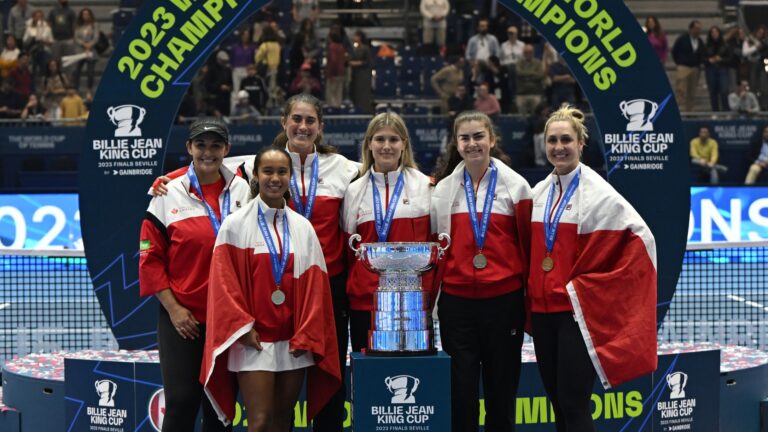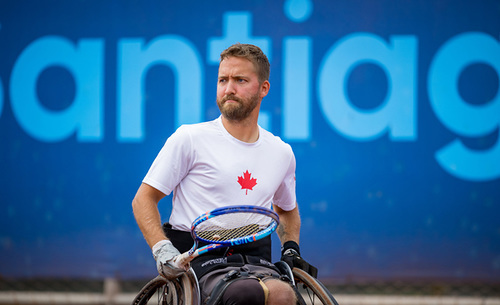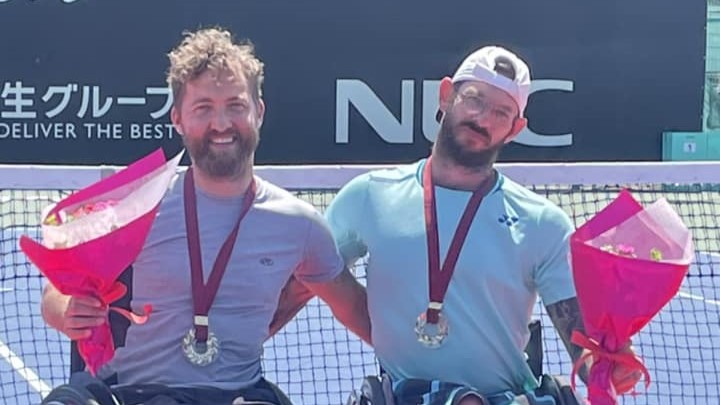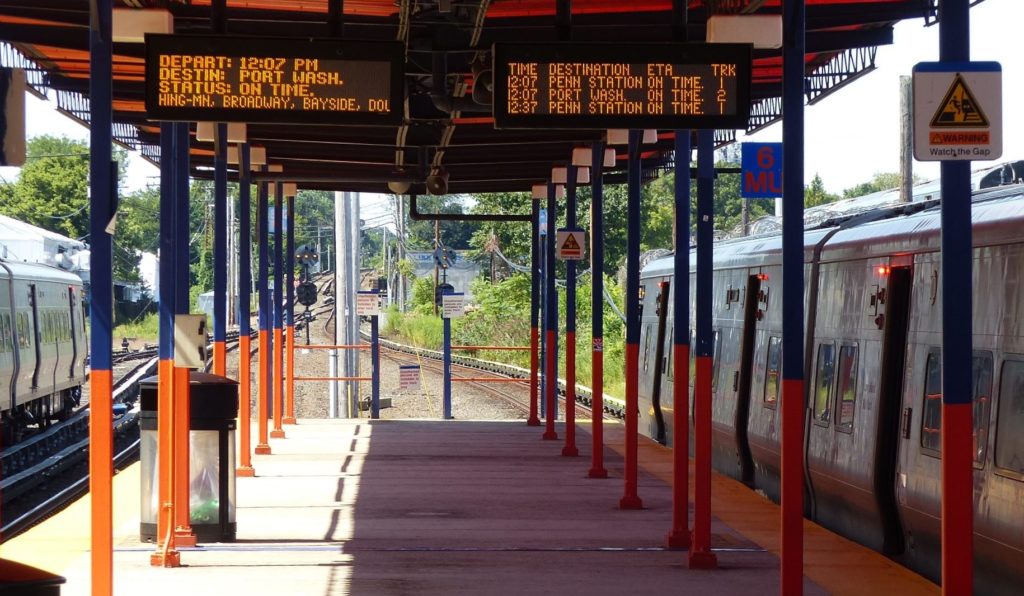
In a time of Covid-19, this is a truly unusual US Open. The crowds that would normally be flowing toward the Billie Jean King National Tennis Center every day are nonexistent – just as in the picture here of the Citi Field (US Open) stop on the Long Island Rail Road.
On this Labour Day, normally there would have been more than a few Canadians at Flushing Meadows eager to watch two of their own – Félix Auger-Aliassime and Vasek Pospisil – play for spots in the quarter-finals.
It turned out it wasn’t to be for the 15th seeded Auger-Aliassme or the No. 94-ranked Pospisil, but both looked good for one set.
Pospisil came the closest to winning his opener when he held four set points in the tiebreak, leading it 6-2 against No. 21 seed Alex de Minaur. But the 21-year-old Aussie ran off six points in a row on his way to a 7-6(6), 6-3, 6-2 victory. Afterward Pospisil didn’t have too many regrets about how he played the set points and, as for de Minaur, he was quick to admit that lady luck had played a part in the remarkable turnaround.
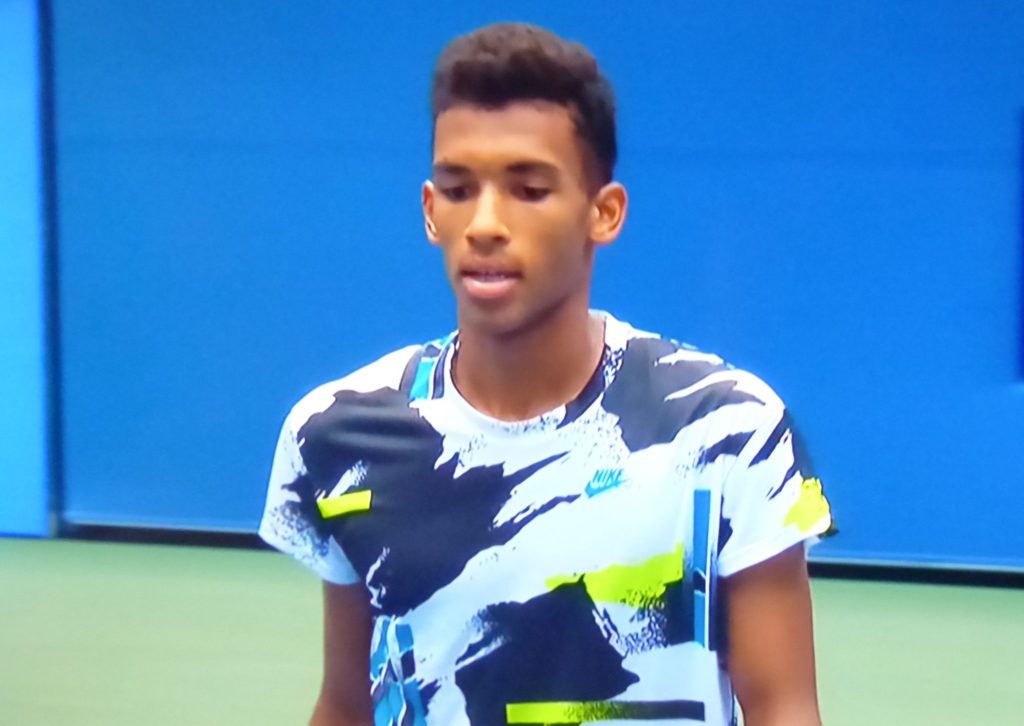
Auger-Aliassime played a strong opening set, separated by only two in total points – 47 – 45 – against No. 2 seed Dominic Thiem. But those two points were in the 27-year-old Austrian favour.
Thiem played poorly – a double fault and three unforced errors in five points – to drop the 10th game when he served to wrap up the set. As the decisive tiebreak began, Auger-Aliassime had handled himself well in the rallies, and was able to get himself out of a few sticky situations with some timely serving.
The round-of-16 match shaped up to be a fascinating contest between himself, a leader of tennis’ so-called ‘next gen’ and Thiem, a proven commodity of the tour with three Grand Slam event runner-up finishes – in a class just a notch below tennis’ ruling troika of Novak Djokovic, Rafael Nadal and Roger Federer.
In the second set, Thiem proceeded to break the Auger-Aliassime serve to 2-0 and rapidly took complete control, running away to a 7-6(4), 6-1, 6-1 victory.
The final points total for the match, after that narrow margin in the first set, ballooned to 100-68 in favour of Thiem, who ended the afternoon with a booming, outright backhand down-the-line winner at the two hour and seven-minute mark.
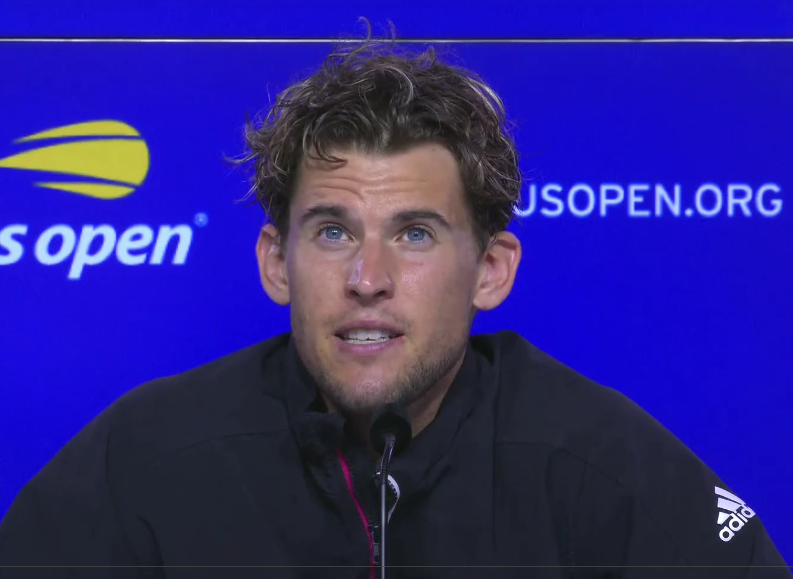
“I just felt we had some good rallies, some good points at the start of the second set,” Auger-Aliassime said. “Then me not winning those, getting broken while feeling like it was still not bad…that really gave him confidence and hurt me more than anything.
“Then from that, it was just tough. He was playing good, heavy, and I was just playing worse and worse.”
Elaborating on the tennis of the 6-foot-1 Thiem, the 2020 Australian Open finalist and runner-up the past two years at Roland Garros, Auger-Aliassime said, “it’s not just the spin of his ball it’s the fact that he plays way back, so you get the feeling you don’t have many openings. And I’m trying to take the ball early and be inside the court, so his shots are hard to handle. I was able to do okay some times but there were a lot of times when it was really tough to control. He’s probably pretty unique – maybe with Nadal. It’s pretty unique game compared with all the other players you see on tour.”
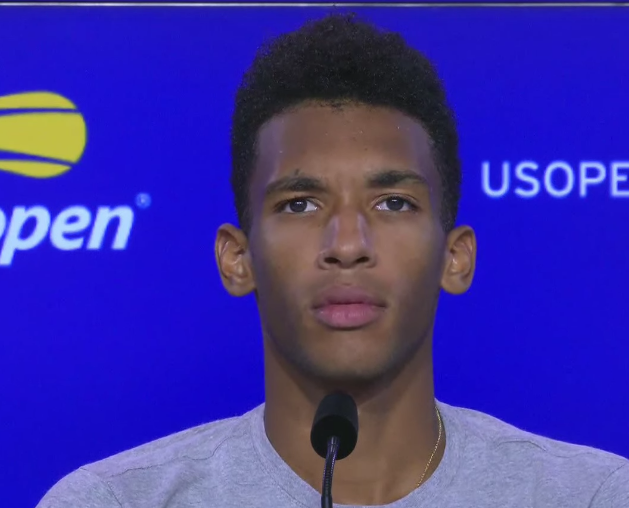
Auger-Aliassime achieved his best ever result by reaching the round-of-16 in just his fifth Grand Slam event. His ranking now will be inside the top-20 at about No. 19.
“Things went pretty well for me,” Auger-Aliassime summed up about his 2020 US Open experience. “Luckily all my (Covid-19) tests were negative during my stay here so I was able to compete in the tournament without any problems. Despite some controversy and some bad luck for some players, they were able to organize the tournament well and it was a good experience in general in terms of comfort for the players. In my own case, it was on the court as well. There were lots of things that I can take from these two weeks – but it’s still tough to finish the way I did.”
He said that he plans to leave for Rome in the next 48 hours and will play there next week in preparation for the French Open, which starts September 27th.
Pospisil will not be heading to Europe quite as quickly. He intends to practice on clay in Florida and then head to Paris early to get re-acquainted with the terre battue. He will be aiming for his first main-draw win in his seventh try at Roland Garros.
On Monday in Louis Armstrong Stadium, Pospisil played most of the first set like the player who had upset No. 25 seed Milos Raonic in the second round and No. 8 Roberto Bautista Agut in round three.
But a right quad issue and an abdominal injury he carried into the match finally caught up with him. He was unable to deliver one of his hyper-aggressive, forward-oriented displays of shot-making.
“The main factor today was physical,” the 30-year-old summed up. “It didn’t really get to the point where it could be decided by who was playing better tennis. I felt like he was significantly better physically than me today, and that was ultimately the deciding factor.”
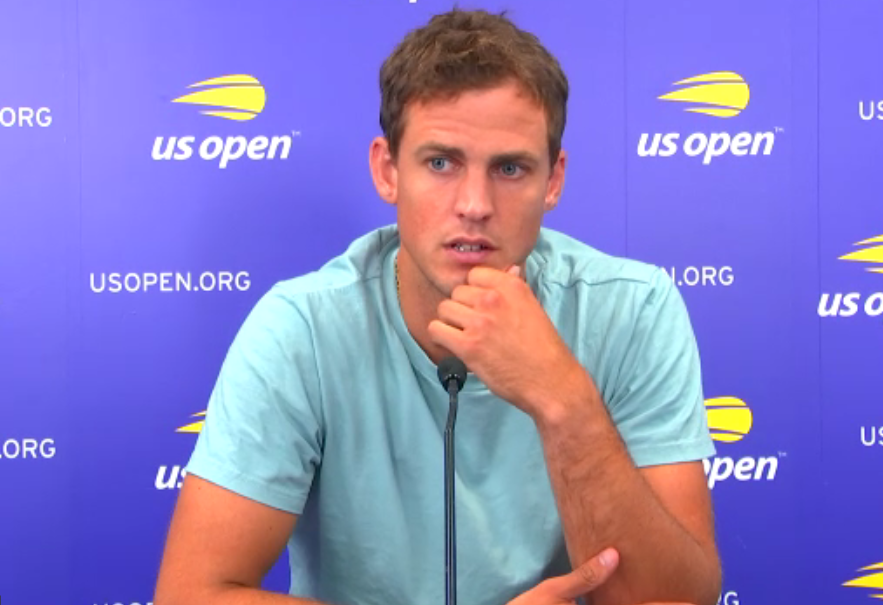
Pospisil added a little levity in talking about his super-speedy opponent de Minaur. “Alex is very quick, and what’s most impressive is he never breathes,” he joked. “He runs side to side and he’s never out of breath. He’s definitely a freak of nature and he’s extremely fit.
“It’s tough, especially best-of-five when it’s hot and when it’s later in the event and you’re not feeling great. I just felt that if I felt good like I did in the previous matches – then I feel like I would have at least had more looks. It still would be a very tough match but I think maybe that’s where things ran away for me.”
His Aussie opponent is well aware of Pospisil’s potential, saying about him in a post-match interview, “if he has his day, he’s going to blow me off the court.”
The winners to unforced errors ratios tell the story of the strengths of the two competitors – the 6-foot-4 Pospisil finished 43/48 while the sub six-foot de Minaur was 16/13.
It was a day for David against Goliath but Pospisil cannot be too discouraged by Monday’s outcome and his round-of-16 finish – his best at a Grand Slam since reaching the quarter-finals at Wimbledon in 2015.
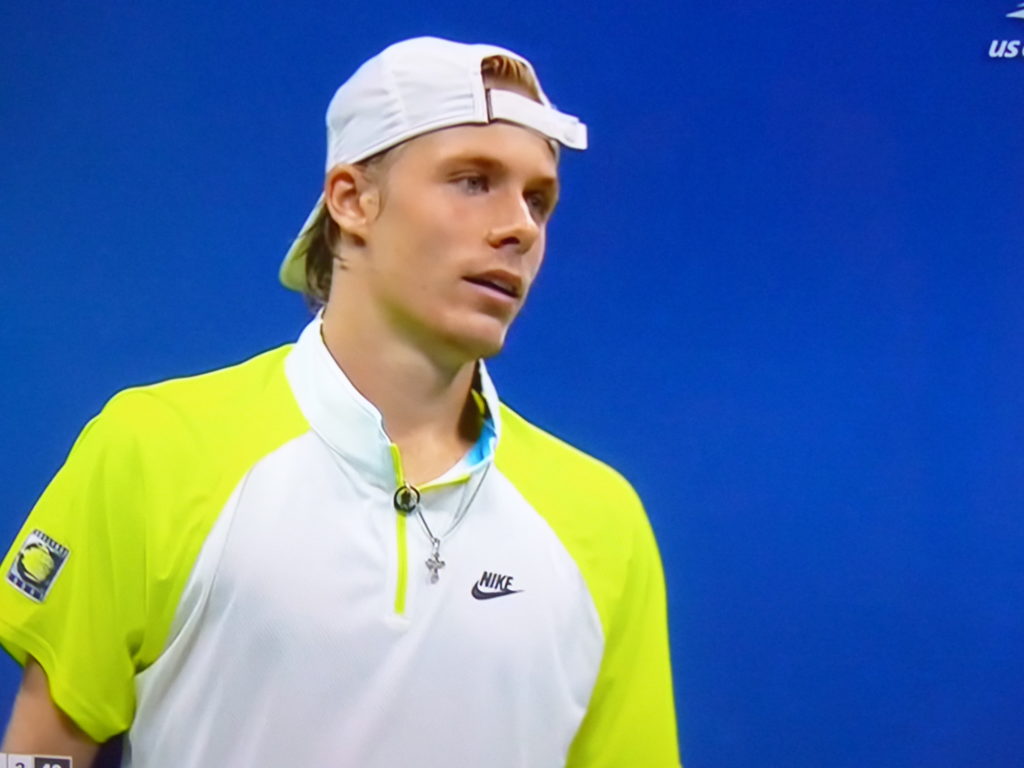
On Tuesday, Denis Shapovalov will attempt to reach his first career Grand Slam semi-final when he takes on Pablo Carreno Busta, the tournament’s 20th seed and the ATP rankings No. 27 player, in the quarter-finals.
Already the first Canadian man to reach a US Open final eight, Shapovalov could hardly have been more impressive in his 6-7(0), 6-3, 6-4, 6-3 victory over No. 7 seed David Goffin on Monday night.
Displaying a newly-found maturity, Shapovalov was patient and virtually dared Goffin to try to stay with him in the baseline exchanges. The 29-year-old Belgian couldn’t match the firepower of the 21-year-old from Thornhill, Ontario. And he looked like a weary, thoroughly beaten man by the end of the match.
Shapovalov, by contrast was fresh and frisky and, though numbers don’t always tell the story, these did. In the past, if he had hit 52 winners (including 13 aces) as he did in Arthur Ashe Stadium on Monday night, his unforced errors would have at least matched that total. But he only had 46 unforced. Goffin was 46 winners and 44 unforced.
Shapovalov served great – including winning 53 per cent of his second serve points to 44 per cent for Goffin. He was spectacular at the net – going 34 of 48 (71 percent) on his chances.
But most noticeable was his willingness to stay in the rallies and outduel his opponent with his obviously superior and explosive power.
“That was my mindset going into it,” he said about grinding out baseline points. “I knew that I can’t just try to slap my way through the match and be over aggressive because he’s just too good for that. He’s too steady. Surely he would have waited for the opportunity where I’m missing a couple and taken advantage.
“I was definitely trying to play more steady. I feel like Mischa (coach Mikhail Youzhny) has helped me a lot with that, just not going out there and trying to blast balls left and right, but actually playing smarter, playing more crafty. He’s such a crafty player. I’m thankful he’s been able to teach me some of that, help me implement that in my game.”
The Denis Shapovalov of Sunday night was the player many have been waiting to see emerge from the apprenticeship phase of his career.
Next will be the challenge of repeating that performance on Tuesday against Carreno Busta. The 29-year-old Spaniard has won their three previous meetings on hardcourts – Chengdu and Vienna (fall of 2019) and US Open (2017) without losing a set. But that was ‘growing pains’ Denis Shapovalov, not the new and improved version under the guidance of Youzhny and a psychologist as well as with the support of his family and girlfriend Mirjam Bjorklund, a 22-year-old Swedish player ranked No. 331 – No. 2 in her country.
“He’s beaten me every time on hard courts,” Shapovalov said about Carreno Busta, who advanced when top seed Novak Djokovic was defaulted in their round-of-16 on Sunday. “It’s definitely going to be an extremely tough, tough challenge. Obviously he’s kind of like David (Goffin) – very, very solid, very stable from the back. It’s going to be a similar matchup for me. I have to play my game but remain steady as possible.”
The match is scheduled for second on Arthur Ashe Stadium after the Naomi Osaka – Shelby Rogers quarter-final that begins at 7 p.m.
A bonus for Shapovalov is that there’s a chance a win could move his ranking up to that most rarefied of statuses – a spot in the top-10.
THE DJOKOVIC DEFAULT
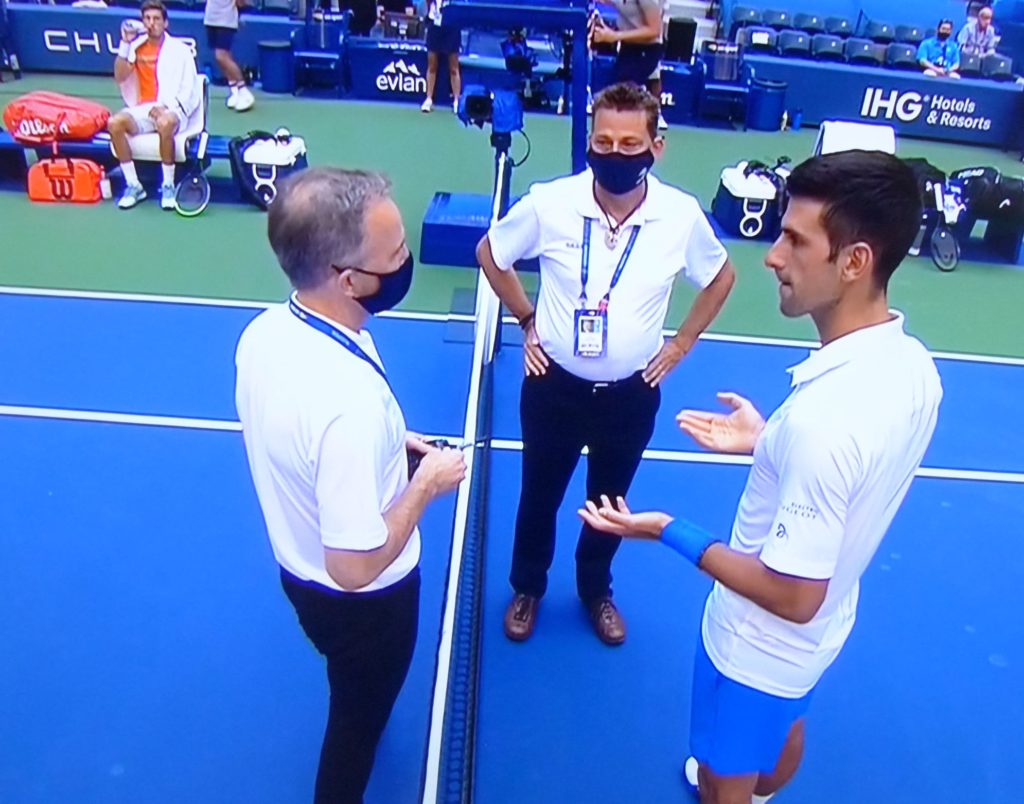
The decision by tournament referee Soeren Friemel to default top seed and three-time US Open champion Novak Djokovic on Sunday was made entirely by the book. Basically the Serb’s hitting a lineswoman in the throat at the back of the court with a ball violated the rule “hitting a ball dangerously or recklessly within the court or hitting a ball with negligent regard of the consequences.”
There are previous examples of this situation including – Denis Shapovalov (an umpire) in Davis Cup in 2017 in Ottawa and Tim Henman (a ballgirl) at Wimbledon in 1995. Unfortunately for Djokovic if he had missed the lineswoman by a few inches, he would simply have received a warning and been able to continue in the tournament.
At the 2016 French Open in a quarter-final match against Tomas Berdych, Djokovic flung his racquet backward without looking and narrowly missed hitting a linesman. If he had hit the linesman, he would almost certainly have been defaulted. Ironically, that was the year that the Serb went on to win his one and only title at the French Open.
It’s possible his early exit from this year’s US Open will give him more time to prepare for next week’s clay-court event in Rome and then the French Open in Paris.
Of note, if Djokovic wins Roland Garros it would mean he has won each Grand Slam title twice – something he accomplished with regards to the nine ATP Masters 1000 events with his victory at the Western & Southern Open in New York two weeks ago.
